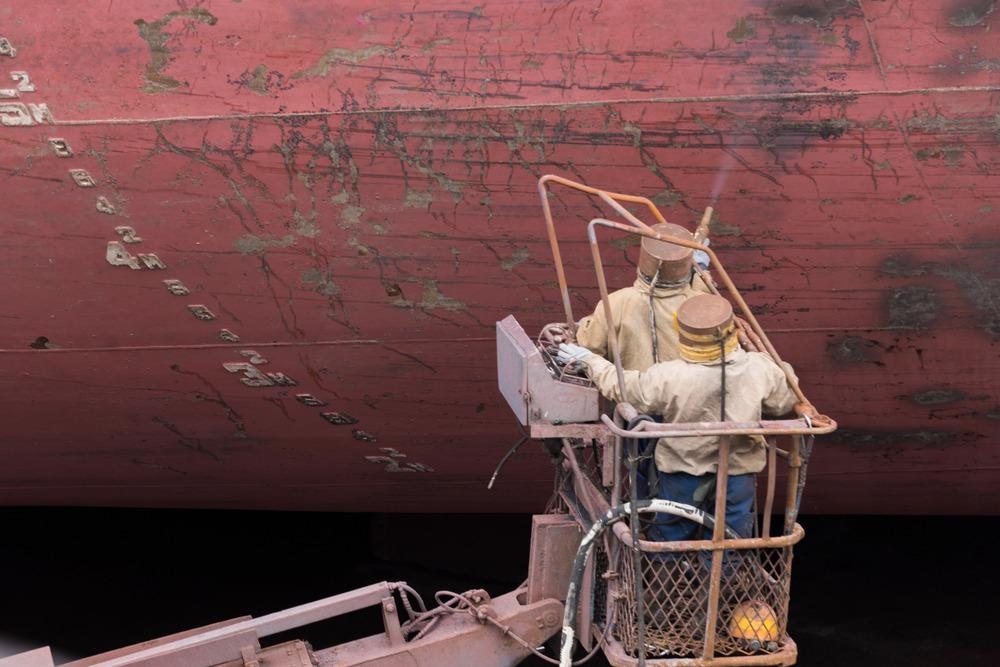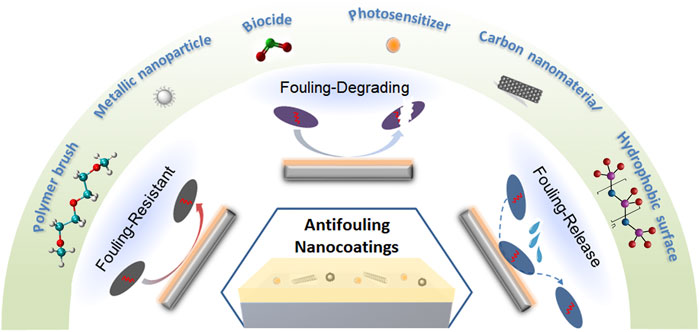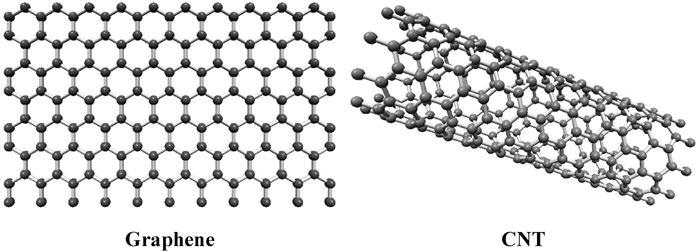A recent study published in the journal Frontiers in Nanotechnology explores the use of photocatalytic nanomaterials to reduce marine biofouling. The authors describe the synthesis of nanomaterial coatings and their applications in marine environments to prevent micro and macro fouling caused by the development of undesired organisms such as bacteria and algae on water-submerged surfaces.

Study: Nanocoating Is a New Way for Biofouling Prevention. Image Credit: Aytug askin/Shutterstock.com
Biofouling is a critical issue in the marine sector. It raises fuel consumption, speeds up corrosion, clogs membranes and pipelines, and decreases the buoyancy of maritime structures such as boats, marine scaffolds, and meshes.
While maritime facilities have historically been affected by harmful bactericidal coatings, increasing environmental issues and regulations have prompted the development of innovative nanocomposites-based anti-fouling treatments.
Blended nanomaterials containing organic and inorganic materials enable the combination of properties from both these groups, which could help to address biofouling
Biologically inspired surface designs, advancements in materials science, and nanotechnology contribute to creating environmentally acceptable marine coatings. The use of photocatalytic nanostructures is one area of research currently explored.

Schematic illustration of the principal strategies and active ingredients in coatings for antifouling. Image Credit: Santosh, K. et al.
Photocatalytic Nanomaterials-Based Anti-fouling Solutions
Due to the photo-electrocatalytic processes that lead to redox reactions, nanomaterial metal oxides can absorb visible and UV light, suppressing bacterial development in the process. Here, reactive oxygen species (ROS) such as peroxides, superoxides, and reactive hydroxy species are produced during photocatalytic activities, which inhibits the development of microbes on the substrate.
Since ROS are short-lived and have a localized surface toxic impact, metal oxide nanomaterials may benefit anti-fouling applications over other forms of nanocoatings. Coatings incorporating nanowires and nanocrystals have an anti-algal activity that is also very effective for anti-fouling.

Schematic structure of Graphene and CNT. Image Credit: Santosh, K. et al.
Applications of Nanostructured Metal Oxides
Nanostructured metal oxides such as Zinc Oxide (ZnO) and Titanium Dioxide (TiO2) are photosensitive metal oxide nanoparticles (NPs) that can be employed in antibacterial, self-cleaning, self-healing, anti-corrosion, and anti-biofouling applications.
ZnO is classified as a benign substance for a variety of applications. Due to its biocompatibility, nontoxicity, and antibacterial qualities, zinc oxide nanoparticles are utilized in the food manufacturing, packaging, and agricultural industries.
In this study, photocatalysis was used to remove several harmful organic chemicals and inorganic pollutants from industrial effluents under the action of light.
Titanium dioxide is commonly employed in self-cleaning coatings and adhesives, but its use is confined to the outdoors as its activation is dependent on ultraviolet light.
It is a standard practice to employ silver nanocrystals as an antibacterial agent since they can be manufactured using environmentally acceptable processes and are harmless to animals. Using titanium oxide nanostructures enhances the performance characteristics of silver nanocrystals due to the high surface area of TiO2 nanoparticles on both the medial and lateral sides of the tubular structure.
Working of Metal Oxide Nano Coatings
Some micro-and macro-fouling organisms are more susceptible to metal oxide nanocoatings than others; the anti-fouling and toxicity reduction capabilities vary depending on their composition.
Aside from that, the physio-chemical features of nanoparticles, such as their particle diameter and their surface electrons and substituents, impact their toxic effects.
Due to their tiny size, nanoparticles may readily pass across cellular membranes and other boundaries that exist in living creatures, which may have harmful consequences. The number of nanoparticles taken in by the body reduces as the size of the particles increases. The fundamental mechanism of metal oxide-based photocatalytic decontamination includes the formation of powerful oxidizing species, resulting in the photocatalytic elimination of adsorbed biofouling organisms.
As a consequence of the differences in charge density of nanostructures, there are differences in surface redox sensitivity, resulting in varying degrees of ROS formation. Owing to the large bandgap of TiO2 and ZnO and the high electron-hole recombination rate of photo-generated charges, the usage of TiO2 and ZnO is restricted to ultraviolet light treatment. Consequently, researchers have concentrated their attention on establishing high photocatalytic performance with these materials, particularly under visible light.

Schematic representation of possible antifouling mechanisms of metal oxide nanomaterials (A) generation of ROS; effect of ROS on (B) a prokaryotic cell, and (C) a eukaryotic cell. Image Credit: Santosh, K. et al.
Significance of Photocatalytic Nanomaterials in Marine Industry
As the ROS produced by photocatalytic nanomaterials in the presence of light can kill or deactivate micro-and macro-bio fouling organisms, anti-fouling techniques using photocatalytic nanomaterials are now possible. In contrast to hazardous biocides, the ROS created by the films is short-lived and only impacts the species that come into close contact with the coating materials. When compared to typical anti-biofouling coatings, photocatalytic nanocomposites are less hazardous to marine life.
Due to their ability to be environmentally friendly, metal oxide nanoparticle coatings are viewed as one of the most promising anti-fouling solutions that are ideal for maritime applications.
Continue reading: Marine Nano-Composites and their Applications.
References
Santosh, K. et al. (2021) Nanocoating Is a New Way for Biofouling Prevention. Frontiers in Nanotechnology, 3, 771098. Available at: https://www.frontiersin.org/article/10.3389/fnano.2021.771098
Disclaimer: The views expressed here are those of the author expressed in their private capacity and do not necessarily represent the views of AZoM.com Limited T/A AZoNetwork the owner and operator of this website. This disclaimer forms part of the Terms and conditions of use of this website.